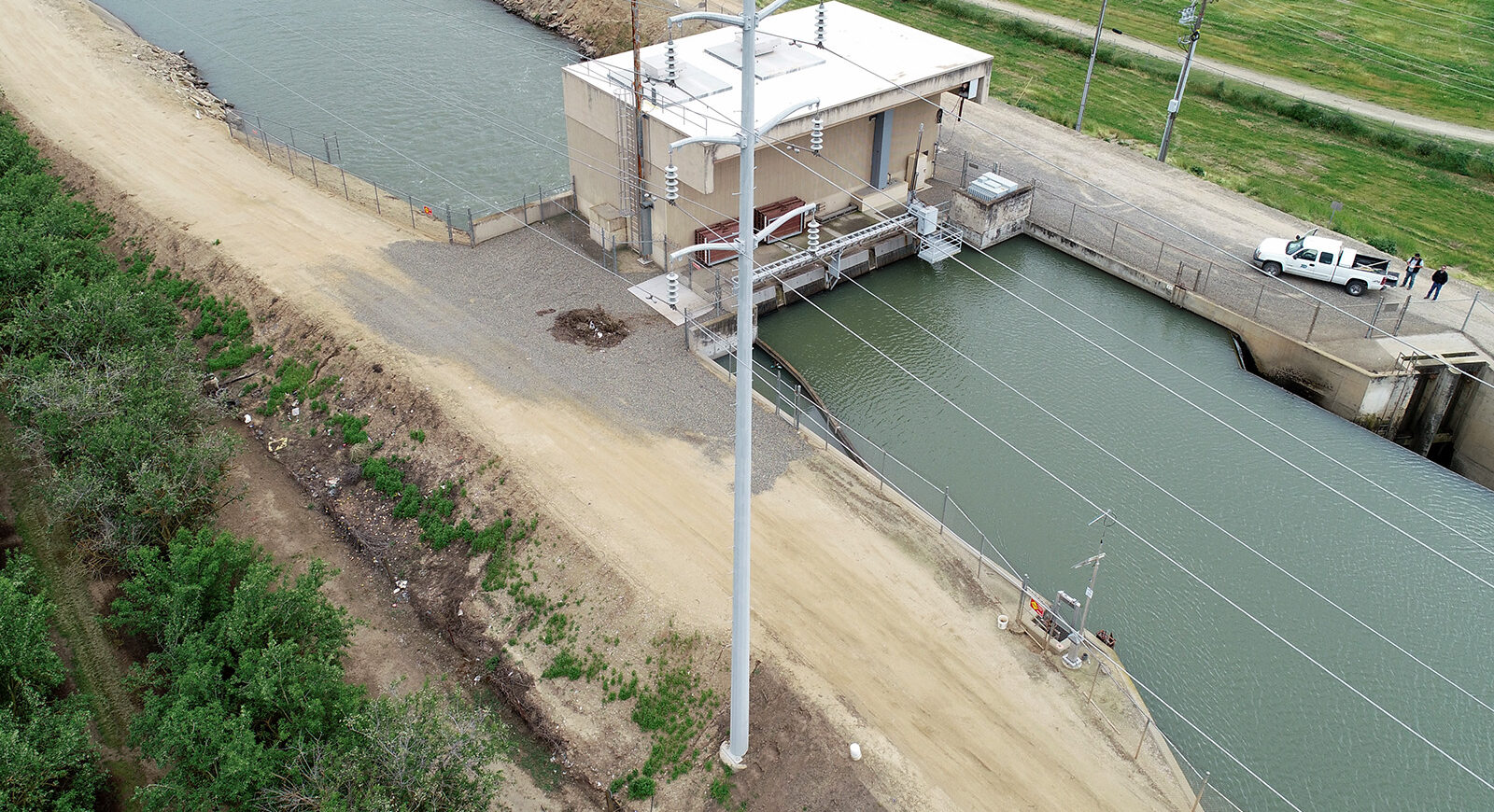Small Hydroelectric Facilities
In 1979, we began constructing the first of eight small-scale hydroelectric power plants at strategic points our canal system as well as several places on surrounding irrigation districts’ canals where water moves with sufficient force to spin a turbine. Unlike large hydro facilities, small-scale hydroelectric power plants are considered a renewable resource by the State of California and count toward the state’s mandate to generate 50% of our load with renewable sources by 2030.
Small Hydro compared to Large Hydro
In the United States, small hydro facilities are described by the US National Hydropower Association as having the capacity to generate 5-100 megawatts of electric power. (by contrast, Don Pedro has the capacity to generate 203 Megawatts of electric power) A megawatt is generally described as enough electricity to supply about 1,000 average homes.
Generation capacity is based on several factors including “head pressure” or, the amount of force that the water can exert on a turbine causing it to spin. The more pressure, the larger the turbine can be and the more electricity it can generate. Because we are using the water in our canal system and small balancing reservoirs to generate electricity, our small hydro facilities tend to be on the lower end of the capacity scale.
Benefits Beyond Generation
Spinning a turbine using water offers many benefits beyond simply producing electricity. It also offers a tremendous amount of operational flexibility and rapid start/shutdown capabilities.
For example-
- Backup and reserve power available within minutes – hydropower plants can begin generation within a few minutes, or stop at any time. Most large combustion turbines, even if considered responsive require half an hour and steam turbines can require several hours to come online.
- Spinning reserve – hydropower can provide spinning reserve or, the capacity to provide additional power supply that can be made available in seconds in the case of an emergency or unexpected changes in the electrical grid when operating below maximum power.
- Black start capability – generating power when no external power exists is known as a “Black Start.” hydropower plants have the capability to be the black start source to restore an entire network of generation in the case of a complete outage.
- Regulation and frequency response – hydropower helps to maintain the power frequency by continuous modulation of active power and to meet moment-to-moment fluctuations in power requirements.
Small hydropower generation also helps to support other renewable generation sources by providing a California-recognized renewable asset that generate clean, carbon-free power any time of the day or night and is not dependent on the weather in order to function.



